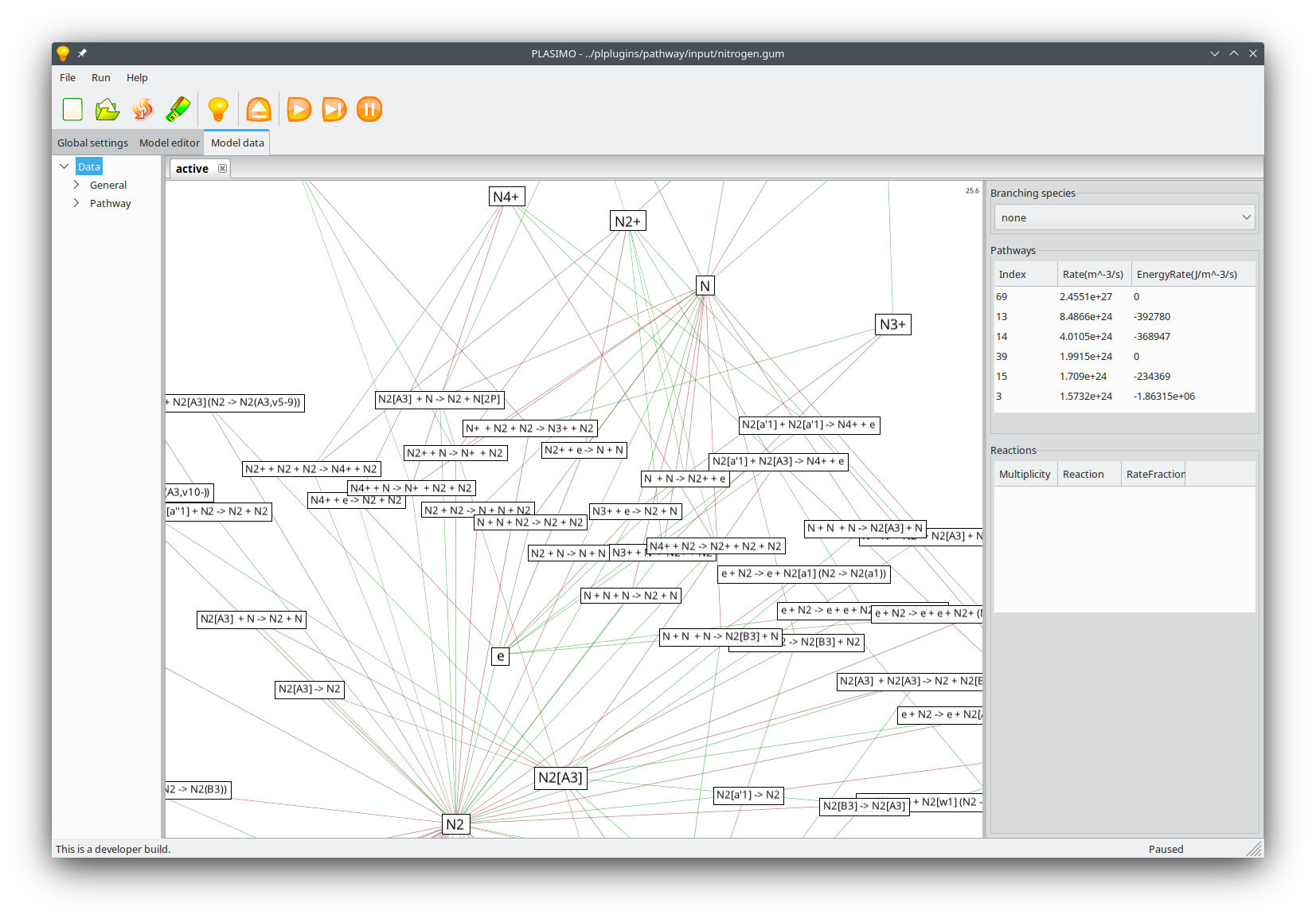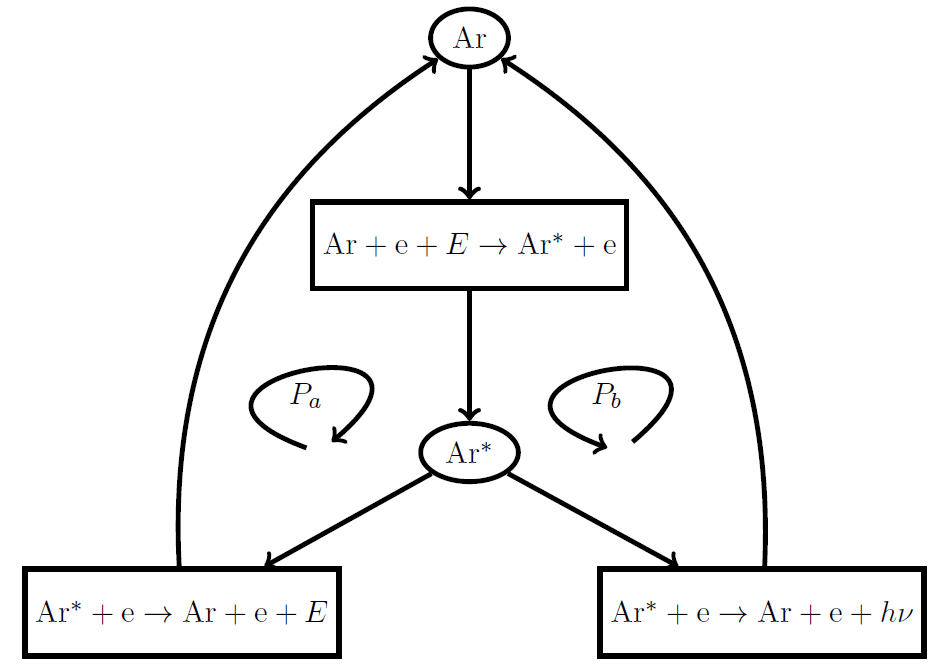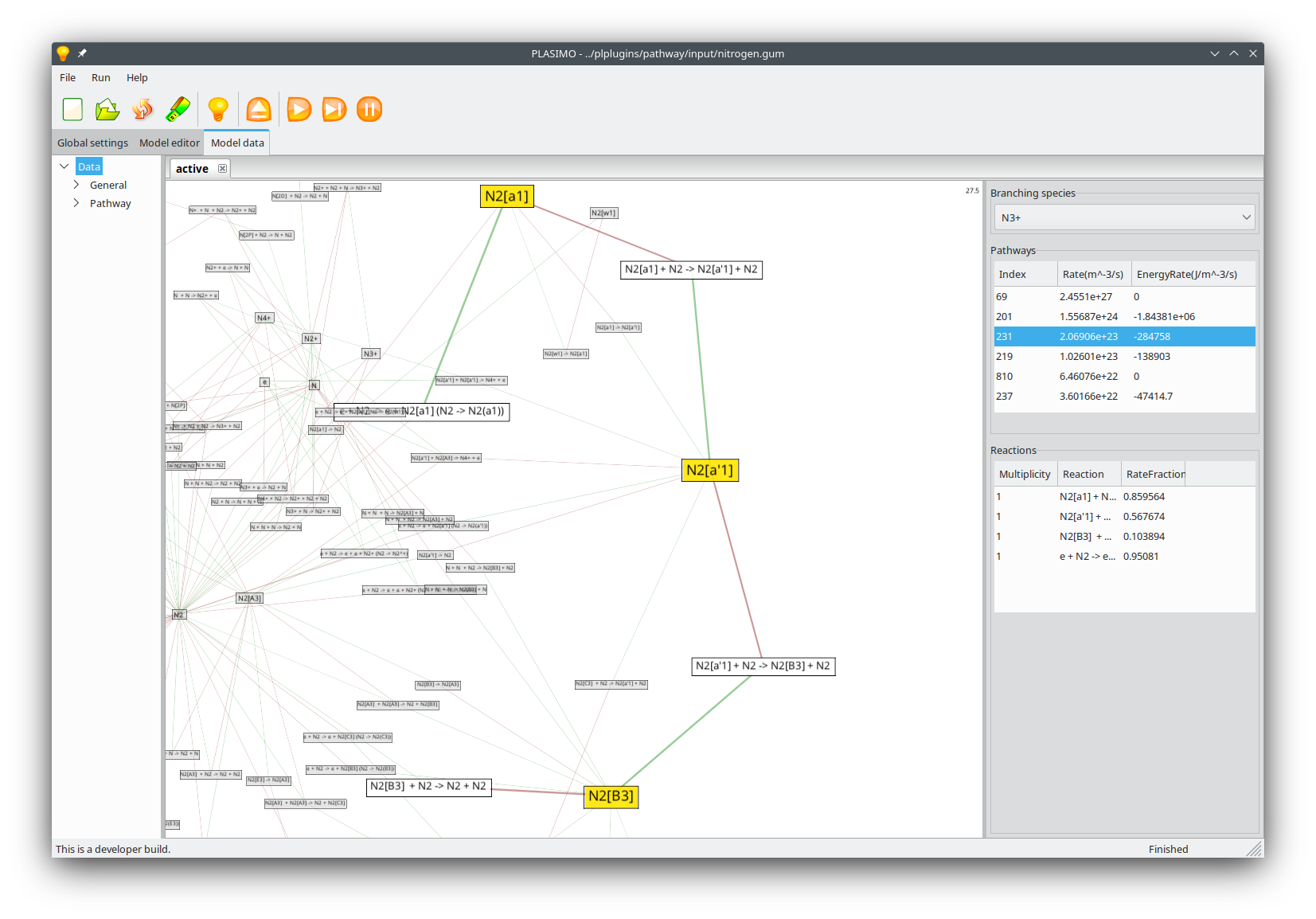PLASIMO's pathway analysis tool is based on the algorithm developed by Lehmann [1], which has been extended with two innovative features:
- it accounts for energy conversion in the constructed pathways
- it supports various connection methods for handling the insignificant pathways
The algorithm determines dominant pathways by connecting reactions that produce a particular species to reactions that consume that species. The order of connecting species is determined by their expected lifetime. The species with the shortest lifetime are connected first.
The pathway analysis tool allows to analyze chemistries giving insight into the reaction chains and their effect on the species densities.

Energy
The original algorithm considers only the particle sources. However, there are pathways that might be considered as insignificant for the production or destruction of a particle, but can be very important for the energy losses [2].

PLASIMO allows to take into account the energy in the algorithm and to control the number of active pathways by specifying a pathway rate threshold and an energy threshold. So that, pathways above that thresholds are considered as important and remain active.
Connection methods
PLASIMO allows the user to specify a threshold for the pathway rates, such that pathways with rates that exceed this threshold will be further considered for making new connections in subsequent steps. Pathways with rates below the threshold are considered to be insignificant. Lehmann [1] suggests to keep track of the part of the rates of the production and destruction reactions that is moved to the insignificant pathways.
In PLASIMO the following strategies for handling insignificant pathways are implemented [3]:
- All possible pathways are generated. Internally the algorithm effectively behaves as if there is no threshold. The only purpose of the threshold is to distinguish active pathways from insignificant pathways in the report that is generated. Since the number of active pathways can grow rapidly, handling all possible pathways can cause memory issues at large chemistries and large computational times are to be expected.
- Only active pathways are connected. Neglecting the influence of the insignificant pathways reduces the memory usage and the computational time significantly. It also introduces small errors in the pathway rates. These pathway rates are typically overestimated.
- The sum of the removed pathway rates for production and destruction is used for making connections as well. The result is that the number of pathways that is kept in memory is reduced while the conservation of rates is satisfied.

References
[1] R. Lehmann, An Algorithm for the Determination of All Significant Pathways in Chemical Reaction Systems, Journal of Atmospheric Chemistry 47, 45, 2004.
[2] P. Koelman, Chemical aspects of CO2 plasma modelling, PhD thesis, Eindhoven University of Technology, 2019.
[3] S. Tadayon Mousavi, Modeling of microwave induced plasmas : application to the production of solar fuels, PhD thesis, Eindhoven University of Technology, 2020.